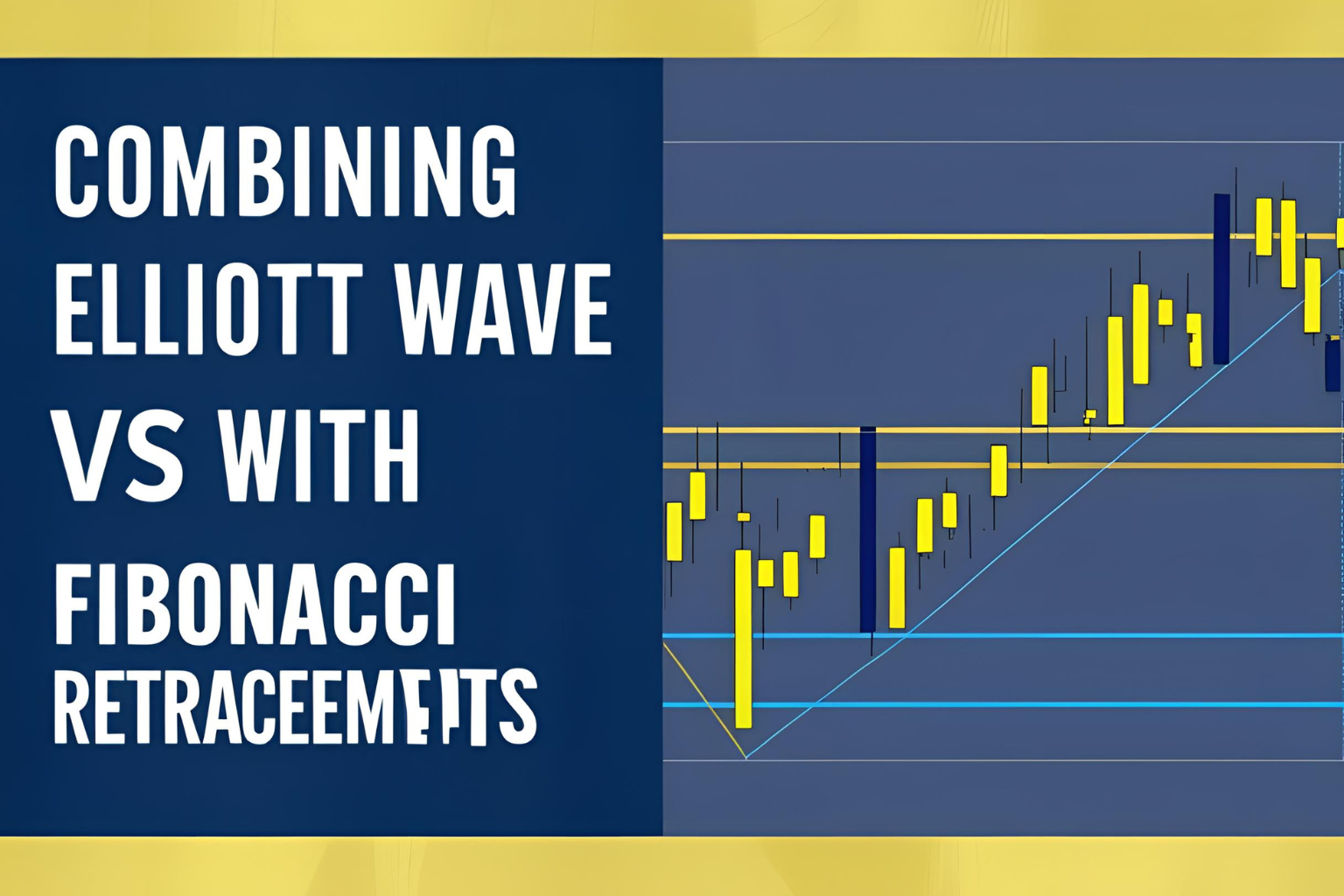Combining Elliott Wave with Fibonacci Retracements
Elliott Wave Theory gives structure to price movement, while Fibonacci retracements help pinpoint where price might pause or reverse. When used together, they form a powerful tool for traders to analyze and enter markets more precisely.
In this post, we’ll explain how to combine Elliott Wave and Fibonacci retracements for better trade setups and risk control.
Why Combine Elliott Wave with Fibonacci?
- Elliott Wave identifies the wave structure
- Fibonacci tools measure retracement and extension levels
- Combining both gives high-probability zones for entries, targets, and stops
Using Fibonacci levels inside Elliott Wave patterns enhances your ability to:
- Predict pullbacks during Waves 2 and 4
- Estimate extensions of Waves 3 and 5
- Confirm the end of corrective ABC waves
Key Fibonacci Retracement Levels
Here are the most relevant levels in Elliott Wave trading:
- 38.2% – Often used in shallow Wave 4 corrections
- 50% – A common retracement during Wave 2
- 61.8% – Golden ratio, highly reliable for support/resistance
- 78.6% – Used to catch deep pullbacks or fakeouts
How to Use Fibonacci in Elliott Wave Setups
1. Wave 2 Retracement
After Wave 1 completes, use the Fibonacci tool from the start to the top of Wave 1.
- Entry zone: Between 50% and 61.8% retracement
- Place stop just below 78.6% or start of Wave 1
2. Wave 4 Retracement
Draw from the bottom to the top of Wave 3.
- Entry zone: 38.2% retracement is typical
- Avoid overlap with Wave 1
3. Wave 3 Extension Target
Project from start of Wave 1 to top of Wave 1, then from Wave 2 low.
- Common target: 161.8% extension
4. Wave C in ABC Correction
Measure Wave A and project its length from the end of Wave B.
- Target: Equal to Wave A or 1.618× Wave A
Example Setup
Imagine you identified:
- Wave 1: $100 → $140
- Wave 2 retraced to $120 (50%)
- Wave 3 rally projected to reach 161.8% of Wave 1 = $180
By combining the wave count and Fibonacci levels, you could plan:
- Entry at $122
- Stop at $115
- Target at $180
Benefits of This Approach
- More precise entry and exit levels
- Confirms trend continuation or reversal
- Works across all timeframes and asset classes
- Increases confidence in your wave labeling
Mistakes to Avoid
- Forcing a Fibonacci level to fit your bias
- Ignoring Elliott Wave rules (e.g., Wave 2 cannot retrace 100%)
- Forgetting to re-measure during developing waves
Conclusion
Combining Elliott Wave Theory with Fibonacci retracements is a smart, structured way to improve your technical analysis. Use Elliott Wave to identify the pattern—and Fibonacci tools to measure where price might react.
This strategy helps traders enter with confidence, manage risk better, and target precise reversal zones.
FAQs
Can I use Fibonacci with all Elliott Waves?
Yes, especially for Waves 2, 3, 4, and C in both impulse and corrective structures.
What’s the best Fibonacci level for entries?
50% to 61.8% retracement levels are commonly used for Wave 2 entries.
Do Fibonacci levels work on crypto and forex?
Yes, they work well across all markets, especially when trends are strong.
Can I trade just with Fibonacci and Elliott Wave?
Yes, but adding volume and momentum indicators can improve accuracy.
Is Fibonacci projection different from retracement?
Yes. Retracement measures pullbacks; projection measures trend continuation targets.






